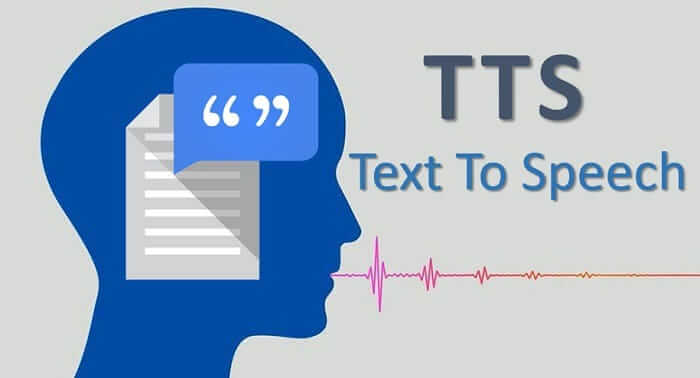
Document accessibility is one of the more common uses for text-to-speech voice–over. Because TTS is a great tool for producing large amounts of voice audio in a short amount of time. But it’s also a relatively new tool, one that comes with a unique set of challenges, in particular for multimedia localization projects.
- Voice-to-text is a type of speech recognition program that converts spoken to written language. Voice-to-text was originally developed as an assistive technology for the hearing impaired.
It can also be termed as: the faculty or act of expressing or describing thoughts, feelings, or perceptions by the articulation of words.
Why are voice-overs used?
The voice-over is a film technique that is utilized in virtually every film genre. Filmmakers use voice-overs to provide quick exposition, tell stories, narrate, and provide an intimate look into the mind of a character. This essay will explore how voice-overs are used in the context of several films.
Why are voice-overs effective?
The power of voice-overs offers an effective way to pique the interest in a certain audience and spread information. The impact of media is heavily affected by voice–overs, as they draw in consumers and deliver important messages.
How many hours do voice actors work?
While that would be an awesome rate for a 40 hour work week, voice-acting is freelance, and you only work when they call you. A typical anime session is a 2-hour block and at most 4 hours. Even then, if you do the math, you quickly see that one can’t survive on that. Most voice actors rely on multiple means of income.
- These TTS systems were first developed to aid the visually impaired by offering a computer-generated spoken voice that would “read” text to the user.
- By giving voice to one of the greatest minds on earth, TTS proved what it’s capable of! And technology has been developing ever since.
What are the conditions in which text-to-speech may be the preferred choice, if not even the best one?
Well, the obvious answer is that we may need text-to-speech when none of the other three options are available for one reason or the other. But there are other, more interesting situations, where text-to-speech not only is acceptable, but it could even be our best option.
- When working with presentations that need to be updated often, human voiceovers may be difficult or even impossible to use. By using text-to-speech, updating the voiceover for a presentation is as easy as editing text.
- When working on multilingual material, we might not have the budget and the logistic possibility to get good speakers in all languages. With Text-to-speech we only need to get our text translated in the target languages, which is a much easier task. We might even adopt a mixed solution (human voiceover for some languages, TTS for other languages).
- When we need to be able to publish quickly and 24/7, text-to-speech is always available.
- When we need to publish a large library of presentations, text-to-speech will be able to work faster than real-time, meaning that we can produce several hours of audio in just a few minutes.
- When we want to use several voice characters in our presentation, the complexity and the budget needed for a voiceover project might get Hollywood proportions. With Text-to-Speech using several voices is as easy as using only one voice.
- Text-to-speech can also be used to build a prototype of a presentation, testing the script and the way pictures and words go together, before calling in a professional voiceover for the final take.
State of the art text-to-speech has made improvements in the expressivity of the voices, is available in many languages and with several voices available for each language, as you can hear in this sample presentation of English voices.
Technology is moving so fast it can make our heads spin, especially in the world of text-to-speech (TTS). As voice-over actors, we’re certainly aware of TTS – and some of us may even fear the technology is advancing us right out of our careers. But it’s really not. Despite the rapid advances in the field, TTS remains unable to replace the real deal. Keep reading to find out why.
How TTS Has Advanced
Text to speech (TTS) is a system that converts the written word into the spoken word. Simple enough, right? But it gets more complex from there. TTS systems store speech units that can include phones, diaphones, words and entire sentences. It then puts those speech units together in specific combinations to create synthetic speech that says anything – all using the voice that initially recorded those speech units.
While the first talking machine was initially introduced back in 1939, advances in the world of TTS over the past several years have been more rapid and dramatic than over the past 75. Some of these advances include the ability to:
- Incorporate a model of the vocal tract and other human voice characteristics to sound more human.
- Correct synthetic speech mispronunciations, adjust regional pronunciations, add emphasis, and other tricks through Speech Synthesis Markup Language (SSML).
- Produce robocalls that stop and ask “Can you hear me?” or wait for a reply, like a human would, before continuing their spiel.
- Copy lip-movements for dubbing.
- Fix small errors in voice-over recordings with synthetic edits.
- Create a model, or “voicebank,” of a real person’s voice for later use as synthetic speech
Once TTS began to converge with machine learning, big data and artificial intelligence (AI), it became smarter, more realistic and, as mentioned earlier, a perceived threat to some in the voice-over industry.
Potential TTS Threats to the VO Industry
There is no doubt the advances of TTS have aroused a number of concerns across the voice over industry, with some of the most common outlined below.
1. Losing Ongoing Royalties
The royalty structure keeps giving us a steady flow of money each time our voice is used, regularly paying us even though we’ve already done the work. If we are recording into a voicebank, are we going to get royalties every time our voice is used to create synthetic speech? Probably not. While we can likely expect to be paid a large amount for the initial recording session, we may lose out on royalties each time our voice is used down the line. After all, how can we be paid royalties for a future recording that uses our voice but we didn’t technically record?
2. No Control Where Your Voice is used
Since technology allows for a pre-recorded voice to be used to create any type of message or project down the line, Voice over artists may fear they won’t have a say in the type of work that will be attached to their voice. Some work may be unacceptable, but we may have no control or say over the matter.
3. Being Prohibited from Future Spots
If we offer buyouts on our voicebanks, we could be limiting our careers without realizing it. For instance, let’s say our voice is used for a car company. We would then potentially be prohibited from doing all spots for all other companies in the future – even though we didn’t know we’d be associated with a car company at the time of the buyout.
4. Continuously Declining TTS Rates
Recording sessions for TTS are no longer in the
$50K range. As technology advances, the rates continue to decrease. Methods of capturing and synthesizing voice take far less recording time, which means far less pay for the voice over
Why Voiceover Actors Don’t Need to Fret
- While TTS concerns may feel valid for our voiceover artists, we don’t have to lose sleep over them for several reasons. For starters, TTS still harbors many limitations – like the inability to spontaneously generate the infinite human range of emotions and vocal techniques.
- Being able to create synthetic speech by simply typing in the words you want it to say is also not something that can yet be done. And synthetic speech, no matter how advanced or finely tuned, has still not shown it can match the multiple nuances and components associated with a real human voice.
- Ongoing payments may still even exist. In addition to a recording fee, there are arrangements for licensing outlined when and where the voices can be used down the line. Turning the TTS fears into the framework for a clear-cut contract can help ensure we have all bases covered, and continue to thrive in the profession.







